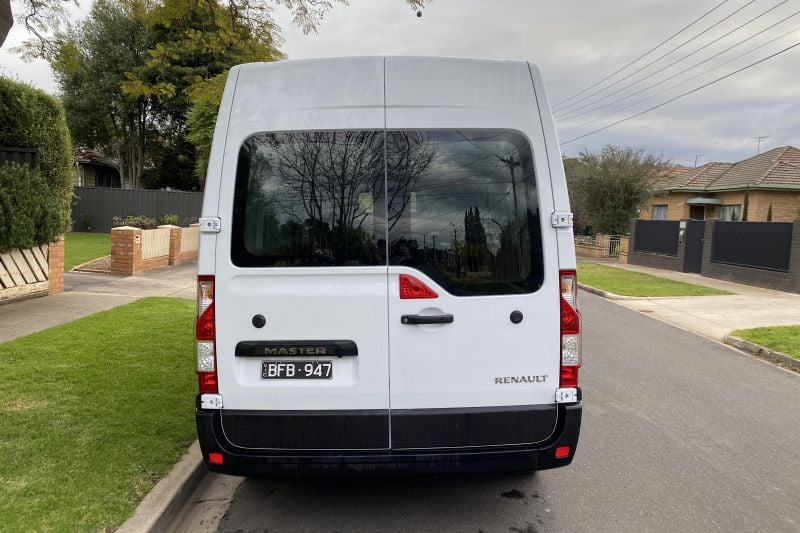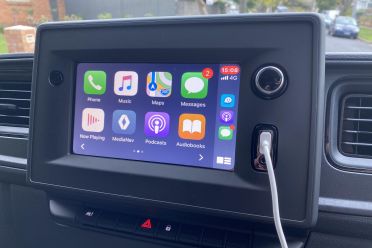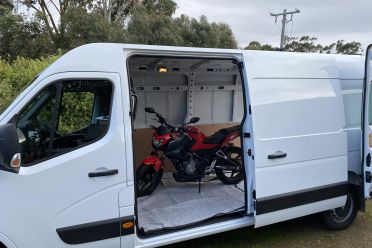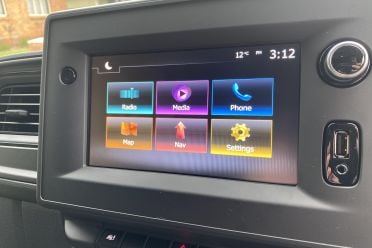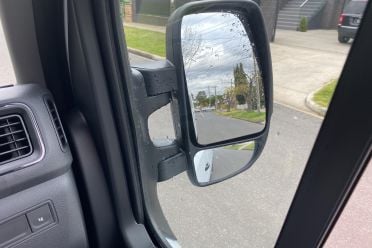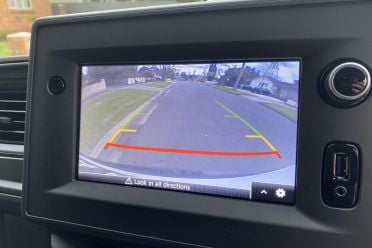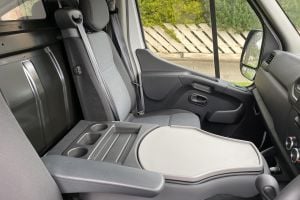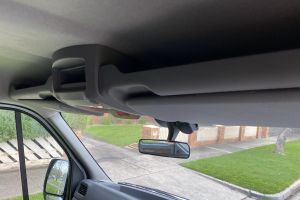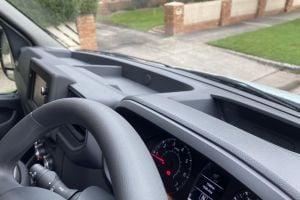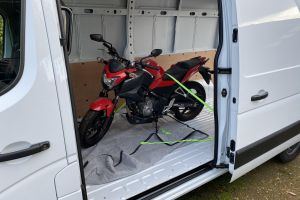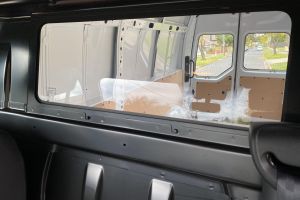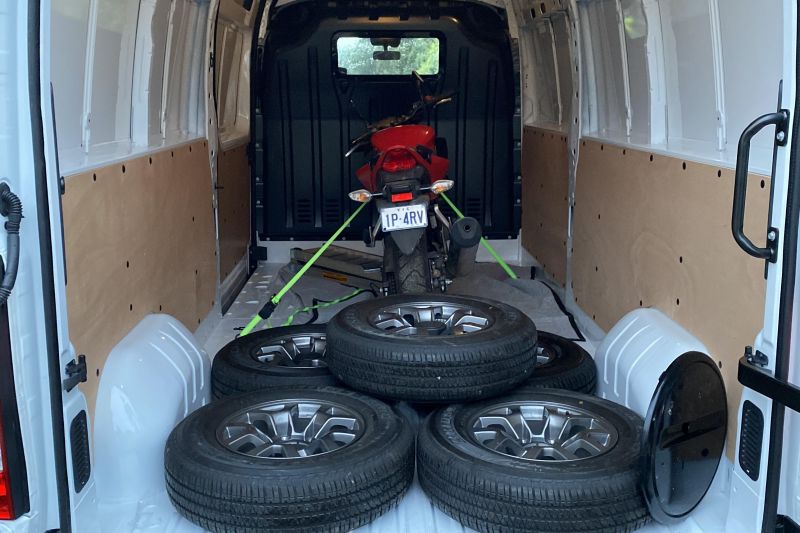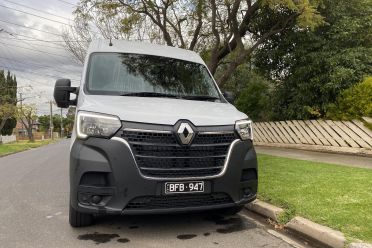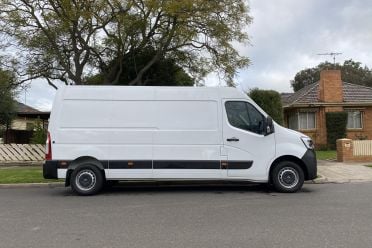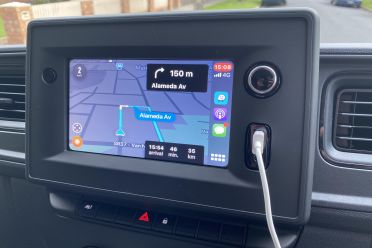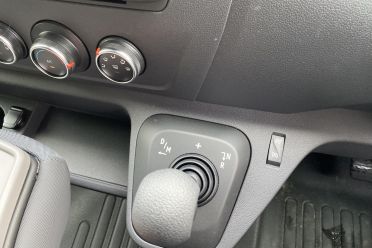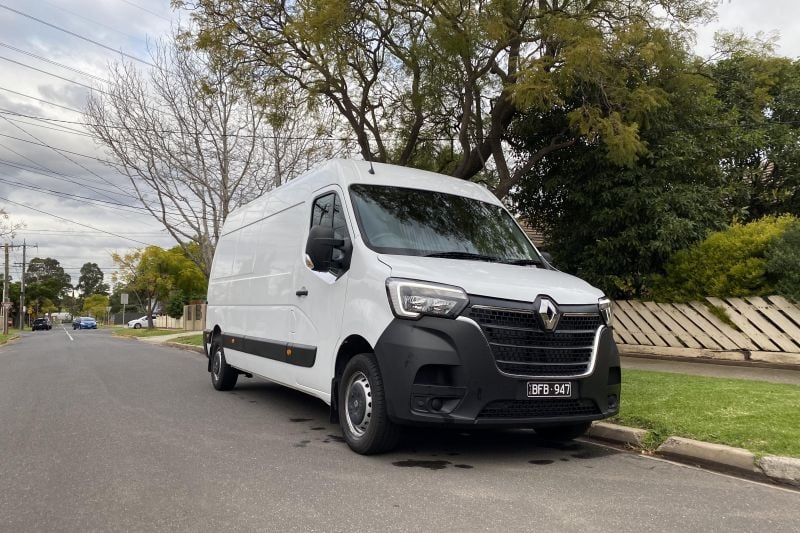Renault regularly leads Europe’s light commercial van (LCV) market against stiff competition from Mercedes-Benz, Volkswagen, and Ford.
The Master is the French brand’s biggest van, sitting above the Trafic. As such it competes with the top-selling Mercedes-Benz Sprinter and the largest Toyota HiAce, plus the Volkswagen Crafter and Ford Transit. There’s also the newly launched LDV Deliver 9 from China that undercuts all rivals in the pricing stakes.
Each of these mentioned rivals are relatively new, generationally speaking, which is why the newly updated Renault comes at a good time for its maker.

How much does the Renault Master LWB cost?
As with most vans there’s a long list of options. The Master comes in van, bus and platform cab/motorhome-donor body types, with various wheelbases (roughly 3.2m – 4.3m), body lengths (5.1m – 6.9m), and front- or rear-wheel drive.
The short wheelbase (SWB) and front-wheel drive (FWD) van kicks off at $44,990 drive–away, climbing to $47,990 drive-away for the medium wheelbase (MWB) variant, and $49,990 drive-away for the long wheelbase (LWB).
We’ve got the latter here, but with the optional automated transmission (it’s automatic in the sense that you don’t need to change gears and there are two pedals) that takes the price to $51,990 drive-away with an ABN.
That stacks up against price-point competitors, which tend to be 20-30cm shorter than the 6.2m-long, LWB Renault. These include the Sprinter 311 CDI MWB ($54,930), Crafter 35 TDI340 MWB ($52,290), Transit 350L LWB ($53,190), and HiAce Super LWB ($53,240). These prices were all correct at the time of writing.
What do you get?
Standard fare includes 270-degree opening rear barn doors with glazed windows, a kerbside sliding door, rain-sensing wipers, 16-inch steel wheels with an under-body spare, and two-level side mirrors with a wide-view lower portion that shows you the wheel’s position related to the kerb. The dusk-sensing headlights are halogen, but there are LED daytime-running lights.
The cargo area has wooden panels covering half the sides, lighting, a 12V outlet, tie-down rings on the floor, a million areas to fasten a ratchet strap along the walls, and a solid bulkhead with glazed window separating the front cabin from the loading area.
Inside there’s cruise control, cloth seats, a middle seat that folds down to become a work bench, manual air-conditioning, a digital trip computer and speedo between the analogue instruments, Bluetooth streaming, and a 7.0-inch touchscreen with factory sat-nav, Apple CarPlay/Android Auto, and a reversing camera.
There’s a decent list of options. You can bundle up a Business Pack (hands-free proximity key fob, fog lights, chrome bits for $1000), and a suspended airbag-less Isringhausen seat ($800) from the list, for instance.
If you want your business to stand out, you can get your Master in a number of colours in place of a wrap. Some of the bolder options include Solid Orange, Chrome Yellow, and Tempest Blue.
Is the Renault Master safe?
There’s no ANCAP crash rating, but then again nor are there crash test results for the Sprinter, Crafter or full-size Transit. These vehicles seem to be too large.
Standard fare includes driver and passenger front airbags, and a driver’s airbag. There’s also a glazed steel bulkhead.
In terms of active safety features there’s the Convenience Pack that adds auto high-beam, lane-departure warning, and blind-spot warning. But this is only available on manual gearbox models. Additionally, only manuals get rear parking sensors. Weird.
What is the Renault Master LWB like on the inside?
It’s quite nice once you clamber up. The wheel (cruise control buttons on the front, audio shortcut buttons behind) has plenty of adjustment, and you’re afforded a commanding road view. The deep side windows and big mirrors give you fantastic forward visibility.
Hard-wearing plastics predominate, and there aren’t any major quality issues to highlight based on our test model. There’s also a vast array of storage: from the middle seat that folds down to become a work table, the plethora of cubbies low and high on the dash, and the overhead storage shelf.
Ahead of you are analogue gauges with a digital speedo. To your left is a high-mounted touchscreen with navigation, phone mirroring, Bluetooth, a USB point that’s easy to access, and a crisp reversing camera. Below this are chunky dials to control your air-conditioning.
It’s an ergonomic, commanding space that may lack the premium veneer of a Sprinter, but which covers off the essential practicalities. Those vinyl floors also wash clean easily.
The loading space is cavernous, able to store 12 cubic-metres or 13,000 litres to be precise. The fact that this model is FWD means its loading area is nearly 100mm taller than the RWD models with their higher loading floors.
For some context, an equivalently-priced Mercedes-Benz Sprinter offers 9500L of cargo space. So if you want maximum loading capacity the Renault makes a strong case.
The cargo area is 3733mm long and 1765mm wide – though only 1380m wide at floor level between the wheel arches. It’s also 1894mm high (about six-foot-two for the old school). The sliding side door measures 1270mm wide by 1780mm high, while the rear barn door opening is 1580mm by 1820mm.
Our test van had plywood panelling running half way up the walls, lighting, a 12V outlet, and more tie-down points on the floor and walls than you can poke a stick at. The optional $1600 Trade Pack (wooden floor, full-height timber wall lining, and LED ceiling lights) is available, as is an $800 right-hand side sliding door.
What’s under the bonnet?
The tested engine is a 2.3-litre single-turbo diesel making 110kW of power at 3500rpm and 350Nm just off idle at 1500rpm to ensure tractability. The transmission is a six-speed automated manual, meaning it has two pedals but feels like a manual (more to come).
It’s front-wheel drive, though you can get a Master in RWD for the longest models, upping payload by about 700kg in the process thanks in further part to twin rear tyres. These models also have an optional Eaton locking rear differential.
There is a six-speed manual gearbox with three pedals available, and strangely it’s mated to a more powerful and torque-laden (120kW/260Nm) 2.3-litre twin-turbo diesel. Clearly, being European, the better engine is saved for the manuals. Only that iteration has fuel-conserving stop/start.
I couldn’t find an ADR fuel claim anywhere, but my 400km stint carrying a couple of hundred kilos, about 60 per cent in favour of highway driving in shocking wintery weather, returned 9.3L/100km. With a 100L tank, you could expect at least 1000km between refills if you aren’t carrying full payload and only driving in urban conditions.
How does the Renault Master LWB drive?
The engine actually does the job well, with instant torque and acceptable refinement enhanced by the bulkhead. It’s more than comfortable keeping up with stop/start traffic or relaxing on highways at the legal limit. That said, if you were towing a 2500kg braked trailer (the maximum claim) or carrying near the 1533kg payload the story might change a smidgen.
The automated manual (clutchless manual) handles clutching and shifting itself unless you opt for manual mode controlled from the shifter. It’s quirky at first, because you feel a slight lag between shifts and you get the familiar back/forth head toss you do when shifting your own gears.
However, despite disagreements from some quarters, I strongly feel that this transmission is one that you can adjust to. It’s never going to shift as crisply as a torque-converter transmission like the Sprinter’s or Crafter’s, but in era where most delivery drivers can’t be bothered with a clutch pedal, it’s a worthy option at least.
The steering takes about 3.8 turns lock-to-lock and is quite light and non-responsive from centre, which suits the purpose. You sit up high as though you’re driving a truck, but the Master is quite docile and easy to steer about in once you’re adjusted to its sheer bloody size. This thing is 6.2 metres long and 2.5 metres tall.
The ride quality is quite good at low speed thanks to the plentiful tyre sidewall. However, an unladen highway run in strong crosswinds was a smidgen knuckle-whitening. That’s physics, eh?
It never engaged the stability control, but it really only squats down for maximum stability when laden. The Sprinter feels a little more planted.
How much does the Renault Master LWB cost to run?
Renault recently improved its commercial vehicle warranty to five years or 200,000km, with 24/7 roadside assist.
Four of the first five services (at generous annual or 30,000km intervals) are capped at $599, while the fourth also includes a new accessory belt, coolant and brake fluid, and so totals $1259.
CarExpert’s take on the Renault Master LWB
If you’re looking at a big Euro van, you’ll be doing number crunching and research beyond this review. If you want the best van regardless of price, get a Sprinter or Crafter. But if you want a no-nonsense workhorse made by one of Europe’s biggest van makers, the Master seems up to the task.
Rest assured the Renault offers pretty good value-for-money considering the space on offer, and a driving character and cabin that’s generally free of frills. From a total cost of ownership perspective, the sharp entry price and published servicing costs give some surety.





